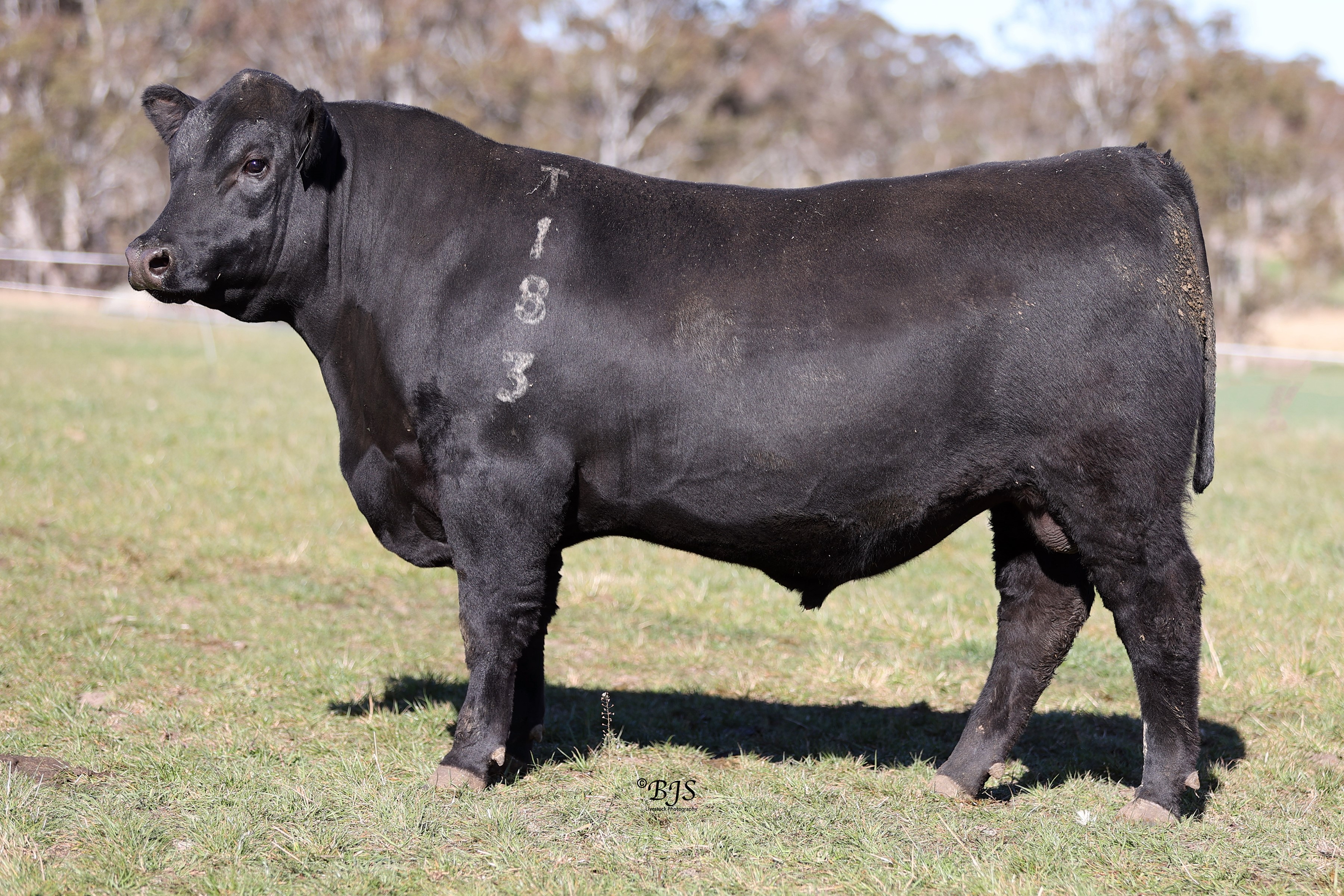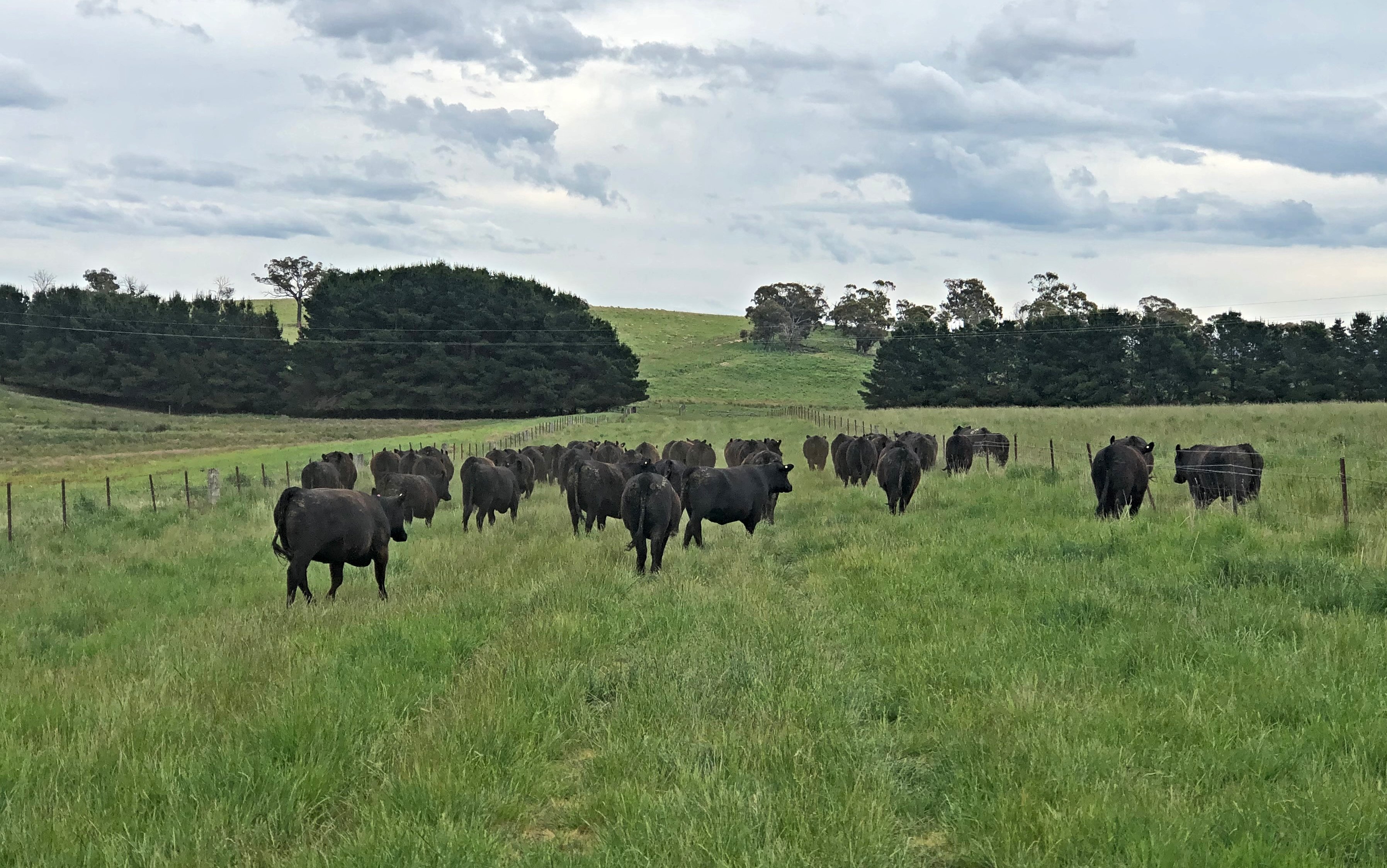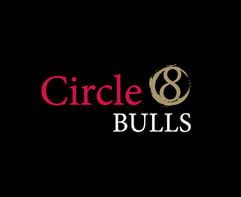 The old adage of ‘you can sell anything in a good market, but only quality sells in a bad one’ is well and truly on display in the current cattle market.
The old adage of ‘you can sell anything in a good market, but only quality sells in a bad one’ is well and truly on display in the current cattle market.
Compared to this time 12 months ago, the eastern young cattle indicator has dropped 40 to 50%, while the bull market has come back 15 to 25%.
Just where the market will sit come time for weaner turnoff next year is anyone’s guess, but producers who have invested in top-quality genetics remain positive they’ll be able to ride the waves.
At Goulburn, NSW, Chatsbury manager Nick Craig is only just seeing the first progeny from Circle 8 bulls hit the ground, but already has intentions to return to Jeremy and Carmen Cooper’s sale next month.
“Last year was the first time we bought from Circle 8, and we ended up taking home 11 bulls from the sale,” Mr Craig said.
“The line-up had consistency. We were after quite a few and they were as good as anything else we’d seen last year.”
Running 750 Angus cows in a spring-calving breeding program across the 7000-acre property owned by Sydney businessman Ken Reed, the Chatsbury operation offloads the steer portion of their progeny as weaners and 90% of the heifers are retained as replacements.
To ensure longevity of the sires within the breeding program, and the production of progeny with the capability of growing out and finishing well, Mr Craig pays particular attention to structural soundness first, before even considering the data of the sire prospects.
The moderate frame of the bulls, and how this flows through to mature cow weight down the line, is also a big factor.
“I don’t think you need huge cows to breed weight-for-age steer calves,” Mr Craig said.
“The 7-800 kilogram cows that look wonderful - and when you sell them at seven or eight years old you get money back - are fine, but I think a 600kg cow is going to still produce you a 300kg weaner calf at probably eight to nine months.
“That’s our target to put into weaner sales and move onto feedlots, and it lets the next bloke do what he wants with them and they’ll grow out well.”
As the cattle market continues its decline, the ability to offer a top-quality, even line of weaners will be key to ensuring business efficiency and profitability.
“When things are good, the worst calf will generally sell better than quality,” Mr Craig said.
“Twelve months ago, people didn’t care - as long as it was a black calf and had four legs - and they were prepared to pay anything.
“But for us, it’s about consistently putting quality lines of cattle together.”
 The 11 bulls purchased by Nick Craig at the 2022 Circle 8 Angus bull sale have been busy at Chatsbury, with the first progeny recently hitting the ground. Photos: Supplied.
The 11 bulls purchased by Nick Craig at the 2022 Circle 8 Angus bull sale have been busy at Chatsbury, with the first progeny recently hitting the ground. Photos: Supplied.
There’s more market opportunity in that, Mr Craig believes.
“If we can put a truckload of steers up all by the same bulls, at the same weight, I think even in bad times you have more opportunity to sell.
“If you’re putting a B-double load of Angus Circle 8 steers online on AuctionsPlus or whatever, that are all the same weight, I think you’ve got more chance of getting not necessarily a lot more money, but you get more lookers.”
Powering ahead in the north
Further north, Circle 8 bulls are proving they can perform in environments vastly different from their early days on the Southern Highlands of New South Wales.
David and Rebecca Sargood, North Yarrawonga, Charleville, were also first-time buyers in 2022, taking home seven bulls.
“Our reason for purchasing Circle 8 bulls was because we found there was a selection of bulls with moderate mature cow weight, along with good growth EBVs,” Mr Sargood said.
“A lot of the Angus breed is going to breeding elephants and out here, if we don’t try to keep our mature cow weight down, they struggle.
“Their low birth weight and positive fat also appealed to us. We find these traits important for our heifers, as we join our heifers for two months as yearlings.”
In November and December, the Sargoods joined 1000 Angus breeders to Angus bulls and 300 heifers to Wagyu bulls, with calves now hitting the ground.
Where they would traditionally offload the progeny as weaners, this year may signal a change of marketing options.
“We’ve been doing the weaner market while the money has been good, but that looks to be changing quite rapidly,” Mr Sargood said.
“Over the past few years, we’ve had a client that’s been taking the lot of the steer portion and the cull heifer portion, and he’s always a little bit above the market to ensure he can secure a quality line without any fuss.”
The option to carry some steers through, while also improving the genetics within their herd, is now on the cards.
“We have cut the heads off some cows this year to decrease numbers a bit and with the way the market is, we look at it as an opportunity to increase our quality of cow and possibly hold over a few more steers,” Mr Sargood said.
Part of seizing that opportunity to increase the quality of their cow herd will be coupled with the purchase of more Circle 8 bulls, with the Sargoods planning to be return buyers this year.
Fertility is the key
Fellow Queenslanders David and Anna Wells will also be heading back to Circle 8 this year.
The family operates their enterprise across 10,000 acres at Golden Arrow, Hannaford, and another 10,000 acres at Totara, Talwood.
Currently joining 600 purebred Angus breeders and turning off roughly 250 weaner steers each year, fertility is a key focus in their breeding program.
“We bought three last year and so far they’ve held up well to the Queensland climate,” Mr Wells said.
“Our pregnancy rates have been over 95%, so we’ve been extremely happy.”
Joining in a three-month window from December 1, any female that returns empty at preg-testing is culled.
Maiden heifers are first joined at 15 months of age – either to leased Wagyu bulls, with all F1 progeny supplied to a local feedlot operator as weaners, or to calving-ease focused Angus bulls.
“We like to value add to our heifer side of things by either joining them to Wagyu bulls for calving ease in our F1 program, or to low birth weight Angus bulls and have the option to keep them or sell them as PTIC heifers,” Mr Wells said.
In selecting new bulls, structure is the first item on the checklist.
“I have to like the shape and the type of the bull, temperament, and length, and then agree with his figures, before he’s an appealing bull,” Mr Wells said.
“Because we sell weaners, obviously early growth rate is important for us, but IMF and EMA seem to be what the feedlots are wanting, so we’re also looking to get good fat content through the bulls.”
Despite the multitude of Angus studs located between southern Queensland and the Southern Highlands of NSW, it’s the quality genetics, customer service and industry relationships that have Mr Wells intending on being a repeat Circle 8 buyer in 2023.
This year, Circle 8 will offer 64 Angus bulls on-property at Tangryang, Marulan, NSW, on September 14, and the sale will be interfaced by AuctionsPlus.
This article is sponsored content in partnership with Circle 8.
 Results
Results-3.png)

